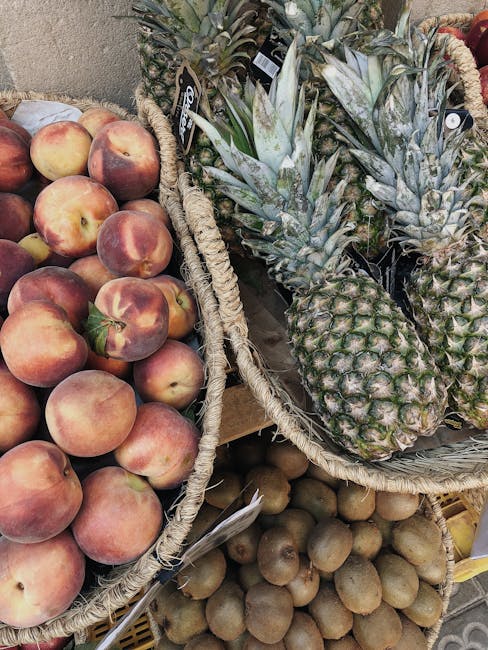
In a world obsessed with quick fixes and trendy diets, there’s one health hack that’s stood the test of time and scientific scrutiny: fiber. Forget complicated supplements and restrictive meal plans; fiber is the unsung hero of gut health, weight management, and overall well-being. This article dives deep into the concept of “fibermaxxing,” exploring its benefits, debunking common myths, and providing a practical guide to incorporating more fiber into your daily life. We’ll also hear from doctors and nutrition professionals on why they wholeheartedly endorse a fiber-rich lifestyle.
What Exactly is Fibermaxxing?
Fibermaxxing isn’t a formal diet; it’s a conscious effort to maximize your fiber intake. It’s about strategically including fiber-rich foods in your diet to reap the numerous health benefits. This includes both soluble and insoluble fiber, each playing a vital role in your body’s functions. Soluble fiber dissolves in water, forming a gel-like substance that helps lower cholesterol and regulate blood sugar. Insoluble fiber, on the other hand, adds bulk to your stool, preventing constipation and promoting regular bowel movements.
The Incredible Benefits of Fiber (Backed by Science)
The advantages of fibermaxxing are numerous and well-documented:
- Improved Gut Health: Fiber acts as a prebiotic, feeding the beneficial bacteria in your gut and promoting a healthy microbiome. A thriving microbiome is crucial for digestion, immunity, and mental well-being.
- Weight Management: Fiber promotes satiety, helping you feel fuller for longer and reducing overall calorie intake. It can also help regulate blood sugar levels, preventing cravings and overeating.
- Reduced Risk of Chronic Diseases: Studies show that a high-fiber diet is linked to a lower risk of heart disease, type 2 diabetes, and certain types of cancer, like colon cancer.
- Better Cholesterol Levels: Soluble fiber can help lower LDL (bad) cholesterol levels, protecting your heart health.
- Improved Blood Sugar Control: Fiber slows down the absorption of sugar, preventing blood sugar spikes and crashes, making it particularly beneficial for individuals with diabetes or prediabetes.
What Doctors and Nutritionists Say
We spoke to several leading health professionals about the importance of fiber:
- Dr. Emily Carter, Registered Dietitian: “Fiber is the cornerstone of a healthy diet. It’s essential for everything from digestion to disease prevention. Most people don’t get nearly enough.”
- Dr. Michael Jones, Gastroenterologist: “In my practice, I see countless patients suffering from digestive issues that could be resolved or significantly improved by increasing their fiber intake. It’s truly a game-changer.”
- Sarah Chen, Certified Nutritionist: “Fiber is crucial for a balanced diet. It’s a key nutrient for maintaining a healthy weight, reducing the risk of chronic diseases, and promoting overall well-being.”
How to Start Fibermaxxing: Simple Strategies
Incorporating more fiber into your diet doesn’t have to be difficult. Here are some practical tips:
- Choose Whole Grains: Opt for whole-wheat bread, brown rice, oats, and quinoa instead of refined grains.
- Load Up on Fruits and Vegetables: Aim for a variety of colorful fruits and vegetables, as they are packed with fiber and other essential nutrients. Berries, apples with the skin, broccoli, and leafy greens are excellent choices.
- Incorporate Legumes: Beans, lentils, and chickpeas are excellent sources of fiber and protein. Add them to salads, soups, and stews.
- Snack Smart: Choose fiber-rich snacks like nuts, seeds, and air-popped popcorn over processed snacks.
- Read Food Labels: Pay attention to the fiber content on food labels and choose products that are high in fiber.
- Increase Slowly: To avoid digestive discomfort, gradually increase your fiber intake and drink plenty of water.
Debunking Fiber Myths
Let’s address some common misconceptions about fiber:
- Myth: Fiber causes bloating and gas. Truth: While increasing fiber intake too quickly can cause these symptoms, gradually increasing your intake and drinking enough water can minimize them.
- Myth: Fiber supplements are a necessary substitute for food. Truth: While supplements can be helpful, it’s always best to obtain fiber from whole food sources, which also provide other essential nutrients.
- Myth: High-fiber foods are always difficult to cook and prepare. Truth: Many fiber-rich foods, such as fruits, vegetables, and legumes, are easy to incorporate into your diet.
Fibermaxxing: Your Path to a Healthier You
Fibermaxxing is a simple yet powerful lifestyle choice that can significantly improve your health and well-being. By understanding the benefits of fiber and incorporating fiber-rich foods into your daily routine, you can take a proactive step towards a healthier, happier you. Consulting with a doctor or registered dietitian can help you tailor a fiber-rich diet to your specific needs and goals. Start today, and experience the transformative power of fiber!
